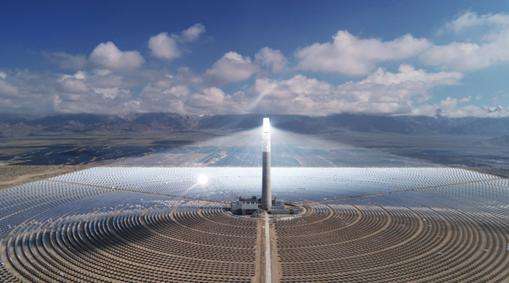1. The larger the area, the greater the resistance and will be easily destroyed in a hurricane. And the greater the resistance, the greater the energy loss.
2. The blade is one of the highest costs of the entire wind turbine, which can reduce costs.
3. Based on a blade length of 34 meters, when the wind is strong, the speed of the blade tip exceeds the speed of sound, causing special air waves. I'm not an expert, so I can't explain it. more clearly.
4. It seems that the 120 degree angle is also good for stress.
Why do most devices such as wind turbines or electric fans have three leaves?
1. Wind power was stopped because its environmental damage far outweighed its economic benefits and was not environmentally friendly. The dangers are: 2. The production ofWind energy will harm the local ecological environment, destroy vegetation, change the terrain, and cause soil erosion and desertification. 3. Electromagnetic radiation generated by wind power affects human habitation. In wind energy systems, generators, substations and transmission lines are the main sources of electromagnetic radiation. Additional receivers in wind power plants, when receiving signals, will pick up the electromagnetic wave signals reflected from the wind turbine blades. The reflected signal is a delayed signal that has a great impact on AM radio systems. 4. Wind energy affects the local climate. Wind power is the use of wind energy in the atmosphere. According to the law of conservation of energy, the consumption and production of one type of heat will inevitably produce or consume another type of energy. Therefore, the proThe flow of energy from wind turbines will inevitably consume part of the wind energy present in the atmosphere. one of the important factors of climate change, wind energy will inevitably lead to climate change. 5. Wind turbine blades are prone to safety accidents. When wind turbine blades are subjected to strong winds of more than 25 m/s, the bending moment, torque, shear resistance and extrusion resistance that the blade roots can withstand are limited. In severe cases, the entire blade will fly. and causing injury to personnel and damage to buildings on roads. 6. Noise risks linked to wind energy production. For a fan of such magnitude, noise is inevitable as the blades spin with huge party costs. Fan blade noise can be roughly divided into three categories: thickness noise, which is caused by thecompression of the air and the blades. On windy days, with doors and windows closed, do you often hear high-pitched and harsh sounds, which sound like ghosts and wolves howling, coupled with the dark sky outside, it's a little scary to thinking about it, as the name suggests; suggests, is caused by the heavy load on the blades; impulse noise, that is to say when the Mach number is close to 1. In this way, the impact of noise on the environment cannot be ignored.
Actually, there are single-blade and two-blade wind turbines. But the most common number of blades in modern wind turbines is three, the result of compromises between various aspects and parameters during the design process. These aspects include, but are not limited to: aerodynamics, energy conversion efficiency, manufacturing and maintenance costs, system reliability, noise and aesthetics. From a simple analysis of tech parametersnics, a greater number of blades can: 1) increase the mechanical torque; 2) increase the power output but at the same time: 3) reduce the maximum rotation speed 4) result in heavier manufacturing and maintenance costs; is also more complex and difficult. Therefore, motors with a large number of blades are more suitable for operation in low-speed locations, such as water pumps and motors for grinding grain. Wind turbines expect the blades to rotate at higher speeds, so the size of the generator located in the center of the blades (at the top of the tower) does not need to be large to meet the requirements of network frequency. Additionally, wind speeds generally increase at higher altitudes. As the wind turbine tower is very high, the blades are also very long (40 m-60 m*). There is a significant difference in wind speed between rotating bladestowards a high position and those rotating towards a low position. If the generator has only two blades, then when the blades rotate so that one is in a higher position and the other is in a lower position, their stress is obviously not uniform enough, so a tower Stronger and more stable should be designed to hold the generator and blades. The three-blade generator can alleviate this imbalance to some extent, allowing it to operate more smoothly. Smooth means less noise, less wear.














